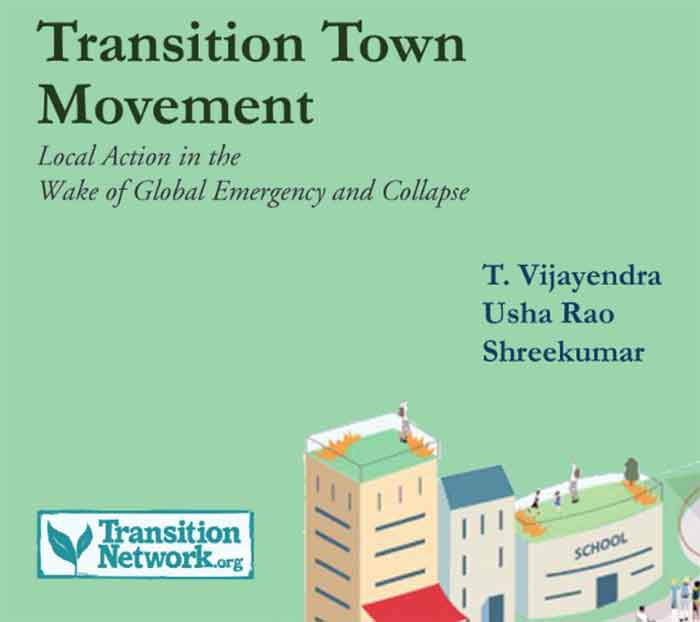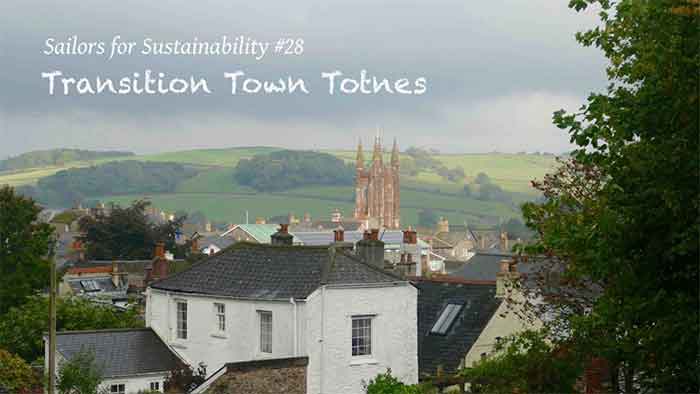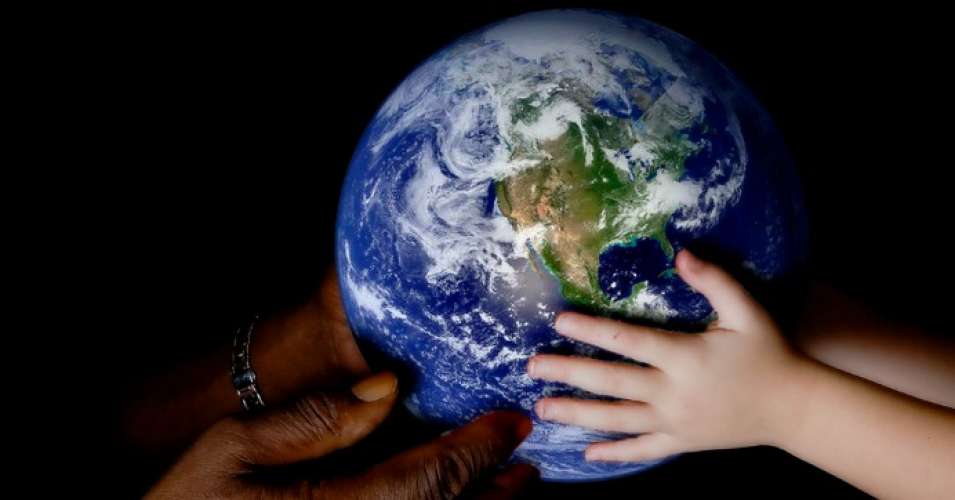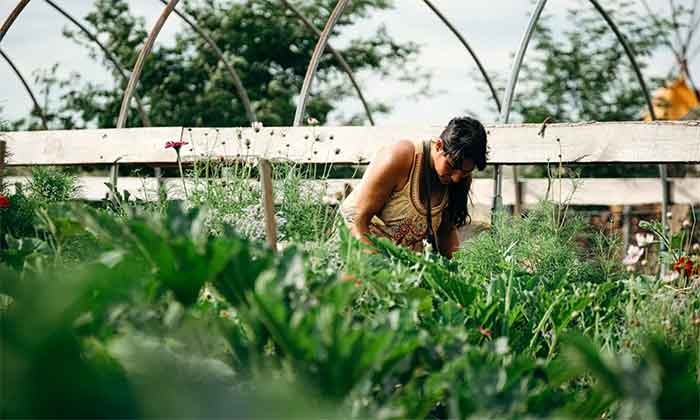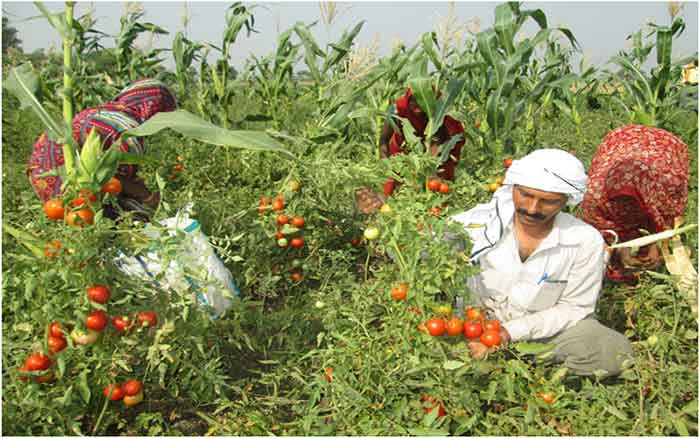
This is the complete text of the talk that was delivered under the auspices of the Vivekananda Chair, Mahatma Gandhi University, Kottayam, Kerala, on 27th May, 2023.
This talk is in three parts: Part I: Global Emergency and End of Modern Technology and Alternatives, Part II: Meaning and History of Transition and Part III: Transition in India.
Part I and II will be published on one day. Part III will be published on the next day. This Introduction will be repeated. All the references are given at the end of the complete article on Day 2.
Introduction
The world is going through a Global Emergency. This has several aspects to it – Resource Depletion, Global Warming, Ecological Degradation, Growing Inequality and Social Unrest. The primary cause of this emergency is the current crisis of capitalism which began with the 2008 financial meltdown. The response of capitalism to this Global Emergency is the current ‘project of global capital’, the so-called The Fourth Industrial Revolution which is doomed to fail. Another response is Transition Town movement. It is an initiative or model that refers to grassroots community projects. The aim is to increase self-sufficiency to reduce the potential effects of peak oil, climate destruction, and economic instability. This is done through re-localization strategies, especially around food production and energy usage, taking us from the present capitalist/industrial stage of society to an alternative stage. In Part III we will have a look at the possibility of transition in India.
Part III Transition India
There are no transition town models in India. Nor is there any group or organisation called transition town. Yes, there are several individuals and small groups who are aware of the concept and are implementing in their own way in a few specific activities. Kerala seems to have a larger number of such people. I have heard of the term ‘Transition Kerala’ and a group called ‘Transition Studies’ in Thrissur headed by Comrade K. Sahadevan. My own booklet on it is translated into Kannada, Marathi and Bengali. So there are a few people and groups in these states too.
However, without the name and an articulated concept, the need is felt by people, organisations and even by the government. They have undertaken several activities which would fall under transition and some of them are indeed very good. So there is a lot of hope for us in India.
The main problem with some of these activities is that only a few of them have been inspired by ideas of local self sufficiency, descaling of energy use and simplicity. These are mainly NGOs and individuals who carry the legacy of the independence movement – ideas of Swaraj and Gram Swaraj etc. Other activities are inspired by the modern green movement and often are in the mould of ‘green capitalism’. Only time will tell us how they will move, change and succeed or fail!
What we will do is to critically survey the scene in the light of transition. We will cover both urban and rural transition. This will help you to decide where and how to pitch in your own efforts. To respond meaningfully, that is, to choose wisely which of these efforts are going to be meaningful, first we have to understand the problem and then have a vision of a post industrial society where such problems would have been solved.
The Vision of Future
Let us start with the problems today. 1. No alternative energy source can replace the petrol and gas which run our trucks and cars. Today, transportation is so basic to global capitalism that its breakdown alone can cause the system to collapse. 2. No alternative energy can generate the amount of energy we are using now. 3. The implication of the above is that ‘globalisation’ is no longer possible. 4. The present level of consumption will result in unacceptable levels of global warming and ecological degradation.
Based on the above, one can deduce that post-industrial societies will have the following main features:
1)Equality 2. A scaling down of the use of resources-particularly energy 3. Local self-sufficient economy 4. Ecological restoration of the present degraded ecology 5. A value system or ethical base which is more cooperative and less competitive than the present society.
What is Local
Local can be defined in many ways. It can be defined in terms of human scale – number of people and area that we can know, walk around or go on a bicycle. A thumb rule is the pin code. Every pin code in the country defines a local area. A Pin Code region in India has an average population of 8221 and an area of 21.22 sq km. So a population of 10,000 and an area of 25 sq km can be considered ‘local’ for India. For rural areas it can be a micro watershed or a panchayat and for the urban areas it can be a municipal ward. And the ultimate core of a locality is, of course, us as individuals or our family.
What can I do?
Let us begin with ourselves. So what can one do? As a general rule the key word is voluntary simplicity at a personal level. It is of course true that one person reducing her/his energy consumption/eco footprint cannot significantly change the situation. As the critics often say, ‘if you don’t use it someone else will use it’. But it does give one the moral energy to go ahead and involve in larger issues in larger contexts. After all, one does face the question, ‘What are you doing about it?’ What is your own footprint?’ Secondly it can also be argued that simplicity or going a bit away from the consumer society actually gives one more time to do things. The ultimate goal at an individual level is not only to reduce one’s carbon footprint, but also to earn one’s livelihood exclusively from Green Jobs. We define Green Jobs as those which involve in ‘Restoring Ecology through Rebuilding Communities’ on the basis of ‘Equity and Sustainability.’
Local Response in Urban Areas: Transition Town
About 70% of emissions which cause global warming come from cities. Rural people follow cities as role models to copy. So cities should take a leading role in meeting the challenge of global emergency.
The aim of transition town would be to prepare a plan to make the town fossil fuel free in ten years. We can start with a town or part of a town which is human scale. It would be about 10,000 people and an area of 25 square kilometres. It is something similar to what people are calling a 15 minute town.
We will look at the following subject areas: 1. Air 2. Water 3. Waste Management 4. Food Production 5. Health & Education 6. Employment Generation and Entrepreneurship.
- Air
We cannot live without air even for 3 minutes! The biggest polluters of air in urban areas are fossil fuel driven vehicles-scooters, cars, buses and trucks. Of these cars have the highest per capita emissions. While it is not visible yet, petrol and diesel are on their way out. Electric vehicles (EVs) are showing up. Fortunately in India it is mainly two wheeler EVs. Bicycle movement is catching on in almost all cities. Here the main issue is that the fancy cycle market is increasing at the cost of more robust roadster bicycles. Cycle rickshaws have never vanished and four wheel push carts also are there. Urban pollution will definitely decrease in the coming years.
- Water
Next to air, water is the most important thing for most life. All human settlements are based near water sources-lakes, rivers and wells. In fact the size of a human settlement until recently was based on the availability of water in the vicinity. Only availability of cheap energy allowed cities to pump water from distant rivers. Today in most cities every drop of water consumed involves some coal (due to electricity in pumping) and/or petrol for tanker transport. As energy supply and size of the town reduce, local water supplies will again become important. Rain water harvesting in new buildings is becoming a law in most cities. It will get better implemented as water scarcity increases. Repair and restoration of tanks and other water bodies is being urgently taken up in many towns and large movements to save the lakes in Bangalore and Hyderabad also have come up. Our efforts should ensure that all lakes get clean/rain water to make lakes potable, fishable, swimmable. And finally to ensure that the water table in the area rises year by year to reach 20 feet.
- Waste Management
Plastic is currently the biggest source of solid waste and single use plastic has been banned in the country. Then segregation at source between green and red waste, recycling of non biodegradable waste and composting the biodegradable waste is the next step. Further we need to ensure zero-waste management and also ensure that industrial and sewage waste does not go to the river or water bodies. All of this has been recognised and many cities have worked towards it. Kerala seems to be very earnest in this field. The toughest problem to crack is converting latrines to compost latrines instead of flushing the excreta to pollute lakes and rivers. In small towns Sulabh Shouchalaya has done remarkable work since 1969. The tough nut is high rise building. It is a challenge which some of us must take up.
- Food
To reduce food miles, all food should be locally procured, except salt which may have to be imported from outside. Perishables like fruits and vegetables should be produced within the local area. Organic home and terrace vegetable gardening is becoming popular in many cities. Again Kerala seems to be very well organised.
- Health and Education
India has a very poor performance in these fields. Urban health has deteriorated to an unprecedented level. We are breathing poison, drinking poison and eating poison. The last is mainly due to the junk food sold in packets and served in restaurants. They all are characterised by HFSS – high fat, salt and sugar. In education some states have a better record. But privatisation of education is ruining people and children. Some NGOs have done exemplary work in these areas and the Delhi government also appears to have done some very good work.
- Employment Generation and Entrepreneurship
New green entrepreneurship and employment opportunities are coming up; such as rain water harvesting, waste processing and composting, home gardening resources, bicycle stands and bicycle repair and maintenance shops, markets for organic and green local products, sale, maintenance and repairs of solar cookers, water heaters and solar panels, etc. The main aim is that at the end of 10 years everyone will be earning their livelihood through green jobs. Here is a challenge for almost everyone to take up. All of you can take initiative in one of these fields and change your life and inspire others.
However, concurrently we must organise ‘awareness building activities’ in terms of talks, film shows, local surveys which have provocative questions that can make people aware. The aim is to bring out a local youth leadership to lead the movement in the community.
Local Response in Rural Areas: Ecological Village
The crisis of rural India
It can be summarised as: Some 80% rural households-peasants and non peasants are in debt. Their agricultural work does not pay them enough to pay back their debts. Most of the debt is to ‘arthias’ and not to banks, and most farmers borrow from arthias for urea, marriages, deaths and births in the family. Why are they in debt? The main reason is the introduction of the green revolution and milk schemes. There are many names to it: Commercialisation of agriculture, Development or Capitalist penetration in agriculture etc. Whatever the name, it has three well known results:
- Increase in production and wealth, 2. Increase in disparity. The rich get much richer whereas the poor may earn more money than before, but they also get in greater debt 3. Increase in Ecological degradation.
Since the green revolution and white (milk) revolution requires a lot of cash inputs, they have to sell their products. So a lot of agriculture at present comprises non food crops. Cotton, sugar cane, tobacco and jute are traditional cash crops. New cash crops have been added like soya (oil cakes for cattle, mainly exported to Iran), and maize (mainly for poultry industry), flowers (mainly for export to cities) and special grass for feeding the milch cattle for supplying milk to the chilling plants of the milk federations. Area under crops, area under irrigation and total production has increased in a big way at the cost of forests and grasslands.
All this has generated enormous wealth and money in rural areas. This has led to consumerism which has increased expenses of rural people enormously. Rural people are trying to follow the role model of urban people-English medium education, motor cycles, smart phones, non local intoxicants. It has also created new problems, such as health-both physical and mental. Green revolution poisons air, water and food. Consuming them both at the farming level (spraying of pesticides) and breathing, drinking and eating them creates health problems. Increased mechanisation of agriculture and mechanisation of transport have made people unhealthy and their medical expenses have gone up enormously. Stress due to debts leads to alcoholism, quarrels, depression and other mental health problems. Suicides are increasing due to debts and mental health issues.
Green revolution is also worsening the health of the soil and leading to a general ecological degradation of the rural areas. As the area under agriculture increases, the area under forest and commons and grass land decreases. Excessive water consumption by crops has led to depletion of lakes and ground water to dangerous levels. Poor landless labourers suffer more because they depend on commons and forests partially.
Family ties are broken and individualisation has increased. Cooperation among villagers has decreased. Since the water below one’s own land is considered a private property, a person digging a deeper bore well deprives neighbours their water. So tensions and quarrels, sometimes leading to violence have increased.
What is Happening
These problems are well known and many people are addressing them. For example in media PARI (People’s Archives of Rural India) is a leading organisation addressing these problems. Many individuals are reporting positive initiatives taken by rural people and organisations. Countercurrents (Bharat Dogra), Vikalp Sangam (Baba Mayaram) and Better India regularly carry these articles. You should follow these reports if you are interested in getting involved with rural transition initiatives.
The main activities going on are organic and natural farming which includes waste management in the form of composting and water management. There are several good NGOs who have taken initiatives in health and education. Some of them carry more than one topic –1. Education and environment issues, 2 health, education and organic farming, education and elimination of child labour. Some like DDS in Telangana have done pioneering work in food security by introducing pds based on local procurement. One initiative in Wardha built a school vegetable garden and produced a very good book. Many organisations are involved in awareness and leadership development programmes. In Karnataka NREGA unions have won Panchayat elections and can intervene in rural development programmes.
Often the government through local administration has helped in these activities. More recently the government at a policy level has taken a big initiative in terms of Sustainable Development Goals (SDG). The 2030 Agenda for Sustainable Development was adopted by 193 members of U. N. General Assembly and it came into effect on 1 January 2016. Government India has written to Chief Secretaries of States in India several ‘Theme Papers’ signed by the Secretaries of various central government ministries. These are concluded by a pious resolution to work in a coordinated fashion. The theme papers have titles like ‘Poverty Free and Enhanced Livelihood Village’, ‘Healthy Village’, ‘Child friendly Village’, ‘Water Sufficient Village’, ‘Clean and Green Village’ and so on. Like any government programme, these are ‘enabling instruments’ and their success or failure depends upon local administration and people’s movement.
The Role of People’s Movement and Pandemic
From the early seventies, in the wake of revolutionary movements that started in the late 60s the consciousness about the evils of development began to grow. One of the earliest was the Silent Valley Movement in the Palakkad district of Kerala. It was started in 1973 to save the Silent Valley Reserve Forest from being flooded by a hydroelectric project. Since then there have been movements in practically every state in India. For example, Koel Karo movements in Jharkhand, Narmada Bachao Andolan spread over three states, Niamgiri movement in Odisha, and Save Western Ghats which also was spread over several states and so on. While in most cases the movements ‘failed’ to achieve their goals, they transformed millions of people in their attitude towards ‘development’. It is this groundswell that helped NGOs, the organic farming movement and even the government to start the above mentioned activities. Another small but significant movement is the community based conservation movement for endangered animals. Saving Pelicans, Vultures, Storks and Bustards have seen important successful movements.
During the three month of the lockdown during the pandemic, all of us learned an important lesson. In a real crisis, the government just gives up and that the people can take care of themselves. While there were indeed a lot of sufferings, the people from all walks of life showed remarkable resilience. And Nature recovered at a speed that surprised even the experts. So if and when capitalism collapses, and it seems that we are in the middle of it, there are actually a lot of positive things to look forward to!
Concluding Remarks
I would like to conclude with an appeal to all of you. It is an emergency and we should give it the highest priority in our personal life. I suggest that you should take up a programme of converting your town/panchayat into a Transition Town. University campuses, industrial town ships or any planned suburb/gated community can be a good place to start as there is always some organization to start with. Many universities have implemented a few such programmes – Waste Management (Vellore) Fossil Fuel Free Transport (IIT Kharagpur). While you can start with a few concrete programmes, I suggest that you treat it holistically and take up converting your campus into a Transition Town. And finally try to earn your livelihood through green jobs.
Notes
- This article is essentially an updated version of my booklet, Kabira Khada Bazar Mein: Call for Local Action in the Wake of Global Emergency (2019, https://archive.org/details/kabira-khada-bazaar-mein)
- Part I, ‘Global Emergency and End of Modern Technology and Alternatives’, of this article is mainly taken from my article, ‘Questioning Technological Determinism – II’
11/09/2022, https://countercurrents.org/2022/09/questioning-technological-determinism-ii/?swcfpc=1.
- For defining permaculture I have used material from ‘New Agriculture: A Permaculture Point of View’ by Venkat (2012, Hyderabad, Permanent Green/ Manchi Pustakam.
- For material on Transition Town I have mainly depended on Wikipedia.
T Vijayendra (1943 – ) was born in Mysore, grew up in Indore and went to IIT Kharagpur to get a B. Tech. in Electronics (1966). After a year’s stint at the Saha Institute of Nuclear Physics, Kolkata, he got drawn into the whirlwind times of the late 60s.
Since then, he has always been some kind of political-social activist. His brief for himself is the education of Left-wing cadres and so he almost exclusively publishes in the Left-wing journal Frontier, published from Kolkata. For the last ten years, he has been active in the field of ‘Peak Oil’ and is a founder member of Peak Oil India and Ecologise. Since 2015 he has been involved in Ecologise! Camps and in 2016 he initiated Ecologise Hyderabad. In 2017 he spent a year celebrating the Bicentenary of the Bicycle. Vijayendra has been a ‘dedicated’ cyclist all his life, meaning, he neither took a driving license nor did he ever drive a fossil fuel-based vehicle.
He divides his time between Hyderabad and organic farms at several places in India, watching birds and writing fiction. He has published a book dealing with resource depletion, three books of essays, two collections of short stories, a novella, an autobiography and a children’s science fiction story on the history of the bicycle, apart from booklets on several topics. His booklet, Kabira Khada Bazar Mein: Call for Local Action in the Wake of Global Emergency (2019, https://archive.org/details/kabira-khada-bazaar-mein) has been translated into Kannada, Bengali and Marathi and is the basic text for the emerging Transition Networks in these language regions. His last book ‘Vijutopias’, which has 12 short stories, is an entertaining book full of hope and energy in these dismal times.
Email: [email protected]

